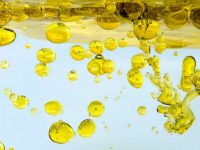Are Your Engines NESHAP Compliant? [caption id="attachment_890" align="alignright" width="248"] Click on the image to read the article[/caption] As part of an effort to reduce engine emissions, the U.S. Environmental Protection Agency (EPA) adopted new national emission standards for hazardous air pollutants (NESHAP) in 2010. The new regulations apply to existing stationary compression ignition (CI)…
Read more
TestOil Recognized as Weatherhead 100 Winner For The Fourth Consecutive Years
TestOil, an independent industrial oil analysis laboratory, is proud to be named a 2013 Weatherhead 100 award winner. This marks the 4th consecutive year TestOil has been named as one of the top 100 fastest-growing companies in Northeast Ohio. Noteably, each year TestOil's ranking on the list has gone up considerably, which is a true…
Read more
Understanding Oil Analysis: How It Can Improve Reliability of Wind Turbine Gearboxes
Understanding Oil Analysis: How It Can Improve Reliability of Wind Turbine Gearboxes [caption id="attachment_885" align="alignright" width="224"] Click on the image to read the article[/caption] Reliability has been defined as the ability to rely on equipment to produce what it is scheduled to produce, when it is scheduled to produce it, for as long as…
Read more
How To Monitor Your Turbine Oil’s Health

How To Monitor Your Turbine Oil's Health Turbine oils, particularly those used in steam turbines, are expected to last 10 to 20 years. During this lifespan, careful monitoring of the lube oil's physical and chemical properties, together with common contaminants such as water and solid particles, is required and should be performed annually. This is…
Read more
New Material Identification Analysis Testing
New Material Identification Analysis Testing TestOil has developed the Material Identification Analysis using Full Spectrum IR technology to analyze your mystery sludge and particles. A solid deposit in a fluid system or a plugging filter is direct evidence of some sort of irregularity and a thorough analysis of this evidence can be extremely valuable in…
Read more
Testing For Water

Testing For Water Water is one of the most destructive contaminants faced by industrial maintenance departments. Studies have shown that water present at any level can reduce bearing life from 10 to 100 times. While the overall tolerance for water varies from machine to machine, a good general alarm limit for water contamination is 0.05%…
Read more

